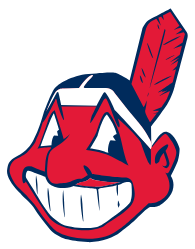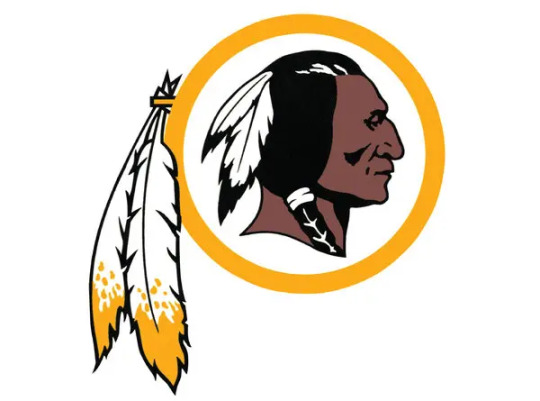#i was fully exposed to the whole guardians name change fiasco
Text
Native American Caricatures in Sports
by Melissa Thomas
Sports need mascots. Apparently. A team name is rarely enough; the team needs a face, an easily marketable object that won’t change as frequently as the players. It’s usually associated with the team name, of course, and this is fairly easy when you have teams named after animals – the Cardinals, the Diamondbacks, the Hornets (hi). But what about when you have a team… named after a group of people?
Throughout the decades of organized sports, names and mascots have come and gone. Teams move, get renamed, or even get dissolved. And yet, through all of that, team names like the Washington Redskins and the Cleveland Indians survived for years amidst controversy and urging for their removal. Both of these names have been successfully changed, but only in the last few years – the teams retired their appropriative logos in 2019, with official name changes occurring at the start of each team’s 2022 season. The use of Native American caricatures as team names and mascots is not new, nor is it over.
In 1968, the National Congress of American Indians (NCAI) began its push to abolish these mascots as appropriation of Native American culture and negative stereotyping. At this point, the Cleveland Indians had been using their name for fifty-three years – it would be another fifty-four before that change would finally come. The NCAI had multiple other attempts in the intervening years, including resolutions in 1993 and 2005. In 2005, the American Psychological Association (APA; yes, as in the citation style) called for the immediate retirement of all Native American caricature mascots across all American sports – from the high school level to the professional – as well as other non-sports organizations. The APA declared that research had shown the negative effects of the use of these mascots on both people of indigenous descent and those not of indigenous descent, coloring their perspective on Native Americans and their culture.
All of these efforts have led to incomplete successes across the United States. The National Collegiate Athletic Association (NCAA) officially banned the use of Native American caricature in college-level sports in 2005, with the support of the NCAI. The only teams who remain are those with special permission from the NCAI and their ‘namesake’ tribes. The Washington Redskins finally removed their name and logo in 2019, being known simply as the ‘Washington Football Team’ until their new name of the Washington Commanders was introduced in 2022. Similarly, the Cleveland Indians discontinued their use of their old mascot, ‘Chief Wahoo’ (yeesh), in 2019, with an official name change to the Cleveland Guardians occurring in 2022.


These changes have not been without their pushbacks, and not every team with Native American name origins has jumped on board. The Cleveland Guardians received a ton of public backlash for their proposed name change, despite a general outpouring of support from their actual fans – the new name was actually chosen by popular vote, with zero Native American stereotypes or connections. The Atlanta Braves, on the other hand, have largely refused to change their name (being a reference to ‘Indian braves’ or warriors) or their tomahawk branding. The Braves do, however, regularly work with their closest tribe, the Eastern Band of Cherokee Indians, who support them – though, most people stand with the official stance of the NCAI, that, at the very least, the ‘tomahawk chop’ chant needs to go.
This is still happening. This is still a process. But putting all of this in the public eye is, frankly, the only way this is going to get changed.
Sources:
“APA Resolution Recommending the Immediate Retirement of American Indian Mascots, Symbols, Images, and Personalities by Schools, Colleges, Universities, Athletic Teams, and Organizations.” APA.org. apa.org/pi/oema/resources/indian-mascots
Dunbar-Ortiz, Roxanne, and Dina Gilio-Whitaker. “All the Real Indians Died off”: And 20 Other Myths about Native Americans. Beacon Press, 2016.
Fryberg, Stephanie A., et al. “Of Warrior Chiefs and Indian Princesses: The Psychological Consequences of American Indian Mascots.” Psychology Press, 2008. https://doi.org/10.1080/01973530802375003 (http://www.indianmascots.com/fryberg--web-psychological_.pdf)
#listen. i grew up (and still live with) a huge braves fan#i was fully exposed to the whole guardians name change fiasco#it's. a name. why are we so opposed to changing it#also the 'guardians' is an awesome name and it's really funny that they are now named after A Bridge#why do grown men throw fits over removing racist names? idk#guardians and commanders are way cooler though#feeling very 'how do you do fellow kids.jpg' about this but i WILL use the tumblr tags to ramble as i always do
0 notes